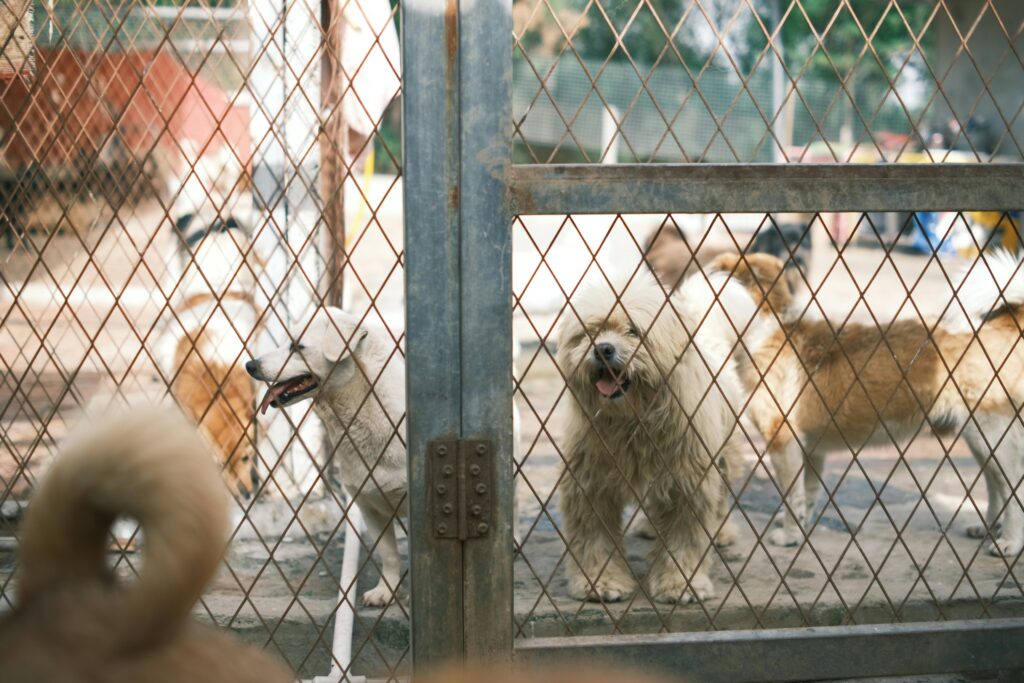If you’ve ever owned a dog — especially a bigger or more energetic one — you probably understand why dog fences are so popular. Fences help keep dogs safe, prevent them from running into traffic or chasing after other animals, and give owners peace of mind when letting their pets out in the yard. For many dog owners, fencing is a non-negotiable.
But here’s a personal confession — I don’t use a dog fence. And honestly, I’ve never needed one. Why? Because I have a small, hypoallergenic dog. I own a Cavapoo called Maple. She is so adorable and super friendly. Read my About Me page. That’s one of the major perks of owning breeds like Cavapoos, Maltipoos, or Shih Tzus — they’re manageable, less prone to aggressive behavior, and perfectly suited to apartment life or smaller homes. In fact, for many small dog owners like me, the conversation around “fencing for dogs” takes a different turn altogether.
Let’s unpack that a bit more.
Why Fencing For Dogs Are Commonly Used
Dog fences have long been a staple for pet owners who want to:
- Give their dog outdoor freedom without constant supervision
- Prevent escapes or wandering
- Reduce neighborhood complaints about barking or chasing
- Separate their dog from kids, guests, or other pets
- Protect flower beds, garden areas, or fragile landscaping
While these concerns are valid, especially for larger or more excitable dogs, they’re often less of an issue for people with small, calm, hypoallergenic breeds. These dogs are typically indoor-focused, less aggressive, and more likely to stick close to their humans.
Still, fences are worth exploring if you’re considering your options — especially if you’re new to dog ownership or live in a house with a backyard.
Types of Fencing for Dogs (And Their Pros & Cons)
1. Traditional Wooden or Metal Fencing

Pros:
- Offers strong physical barrier
- Durable and long-lasting
- Can also enhance home security and privacy
Cons:
- Can be expensive to install
- Requires regular maintenance (painting, repairs, etc.)
- May not be necessary for smaller or indoor dogs
2. Chain-Link Fences

Pros:
- Budget-friendly
- Provides visibility while keeping dogs in
- Quick to install
Cons:
- Less visually appealing
- Doesn’t offer much privacy
- Dogs can still bark at passersby or other animals
3. Invisible or Electric Fences
Pros:
- No physical barrier, so your yard stays open and spacious
- Often cheaper than traditional fencing
- Works for a variety of yard sizes
Cons:
- Requires training and discipline
- Can cause discomfort or anxiety for sensitive dogs
- Doesn’t prevent other animals or people from entering your yard
4. Portable or Playpen Fences

Pros:
- Great for renters or those who move frequently
- Lightweight and easy to set up
- Ideal for small dogs or puppies
Cons:
- Not suitable for larger dogs
- May tip over or be climbed if not secured properly
- Offers limited space for movement
5. Indoor Dog Gates and Barriers
Pros:
- Perfect for apartments or indoor-only dogs
- Keeps dogs confined to safe spaces
- Often stylish and adjustable
Cons:
- Not effective for outdoor use
- Dogs with separation anxiety may still jump over or push them down
Why Small Hypoallergenic Dogs Often Don’t Need Fences

Here’s the honest truth — one of the biggest joys of owning a small hypoallergenic dog is how low-maintenance they can be. Most of these breeds are:
- Naturally gentle and non-aggressive
- Happy to stay indoors or in small spaces
- Not prone to bolting or escaping
- Easily trainable and responsive to voice commands
Many of them prefer snuggling on the couch to chasing squirrels in the yard!
If you’re living in an apartment, have limited mobility, or simply don’t want the stress and expense of installing a fence, choosing the right dog breed makes all the difference. Breeds like the Cavapoo, Maltese, Toy Poodle, Bichon Frise, and Havanese are calm, allergy-friendly, and ideal for smaller spaces. You’ll find they adapt beautifully without needing a fenced yard.
Are Cavapoos good for apartments?
Best hypoallergenic dogs for seniors
Choose the Dog That Matches Your Lifestyle
While fencing for dogs can be essential for some, it’s not a must for everyone — especially not for people with small hypoallergenic dogs. In fact, that’s part of what makes these breeds so attractive.
- No need to stress about aggressive behavior or escaping
- No big outdoor fencing bills
- No high-maintenance fur shedding or allergy flare-ups
If you’re a dog lover dealing with allergies, living in an apartment, or enjoying the quieter years of life, small hypoallergenic dogs are a perfect fit. And chances are, you’ll never need to worry about building a fence.
Thinking of getting a small hypoallergenic dog?
Explore our top breed guides here and find the perfect low-maintenance companion for your lifestyle.



